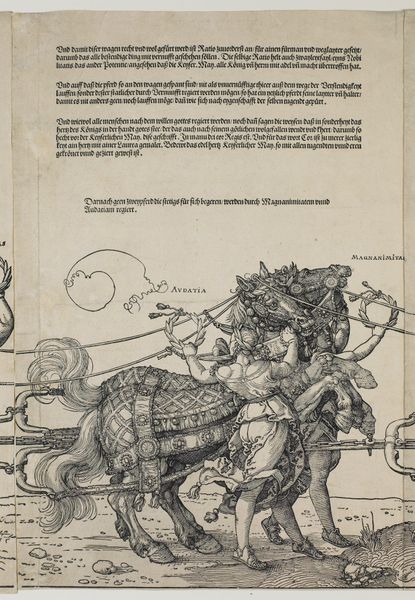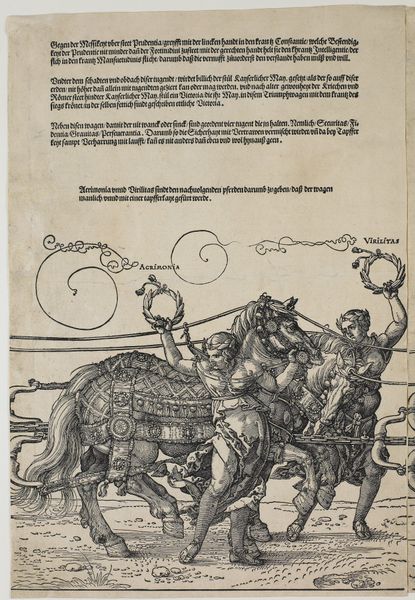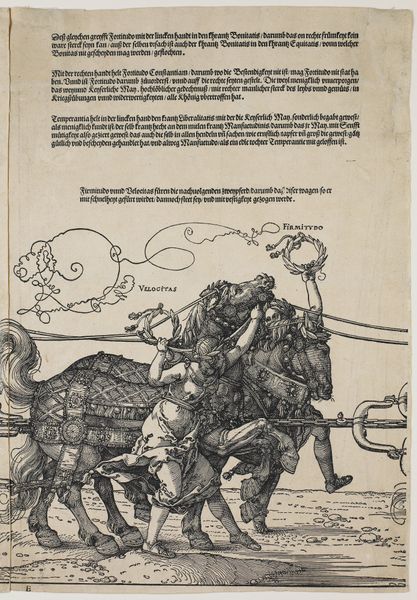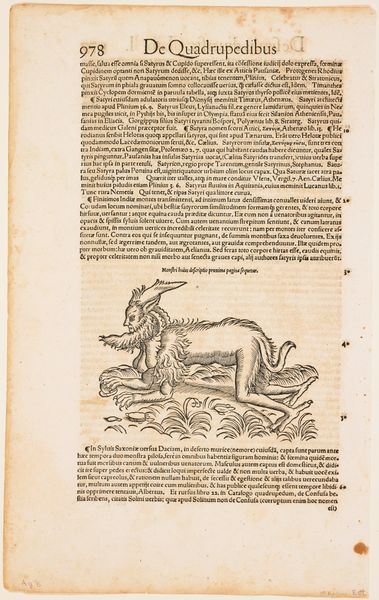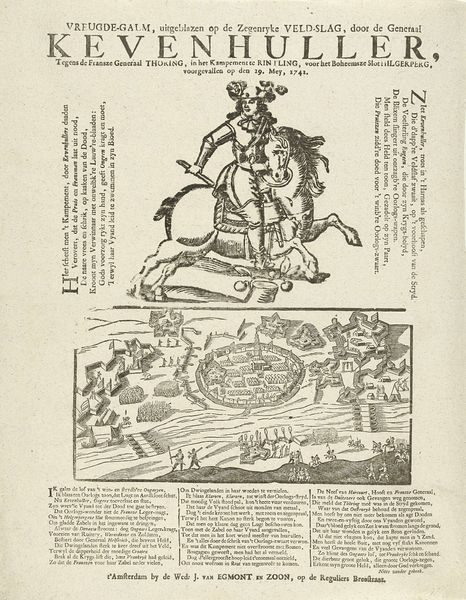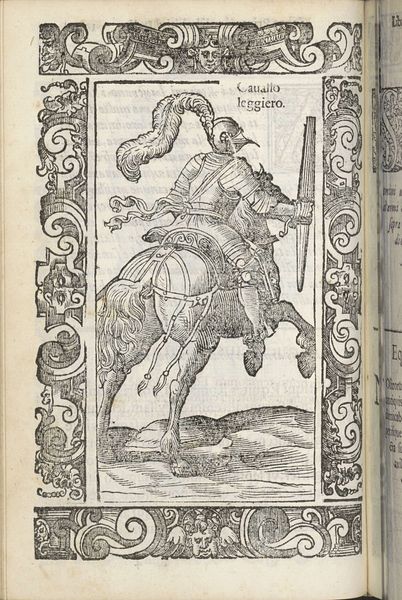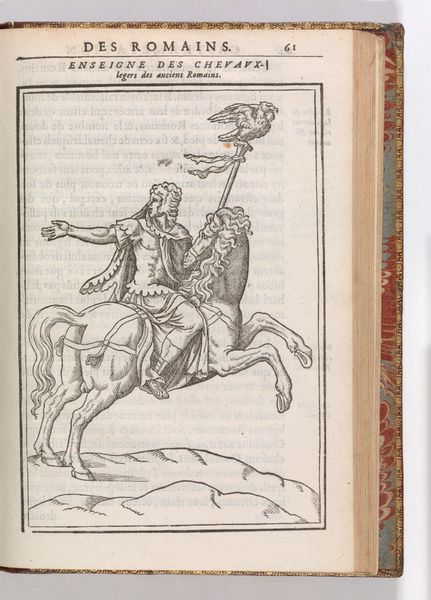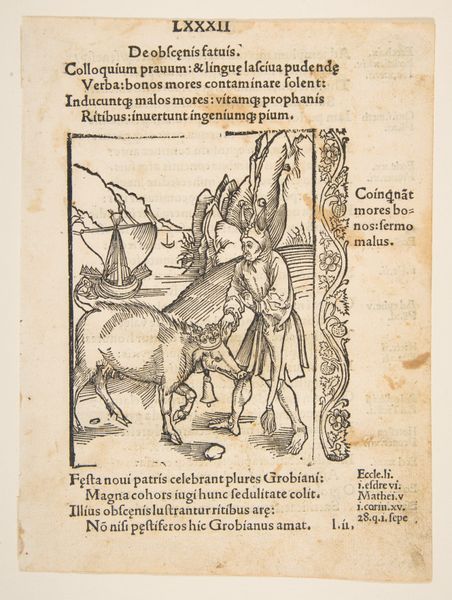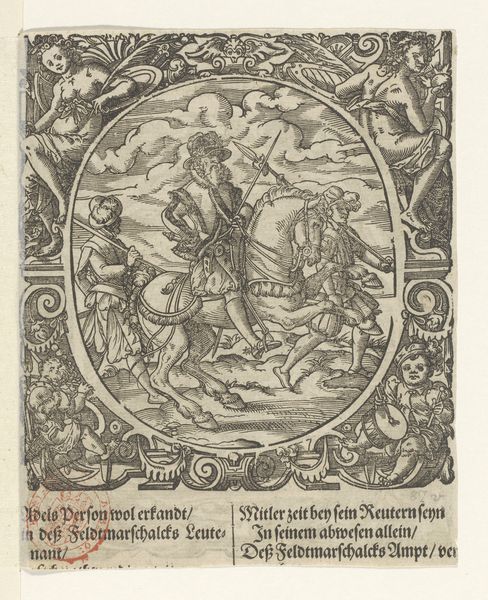
Large Triumphal Carriage of Maximilian I c. 1518 - 1522
0:00
0:00
print, woodcut, engraving
# print
#
11_renaissance
#
woodcut
#
history-painting
#
northern-renaissance
#
engraving
Dimensions: 16 1/8 x 10 in. (40.96 x 25.4 cm) (sheet)
Copyright: Public Domain
Albrecht Durer created this section of "Large Triumphal Carriage of Maximilian I" through woodcut. This print testifies to the public role of art in the 16th century. Maximilian I, ruler of the Holy Roman Empire, was a patron of the arts who understood the political power of imagery. Durer's triumphal carriage visualizes Maximilian's power and grandeur, drawing on classical motifs to legitimize his rule in the eyes of his contemporaries. Made in Germany during the early years of the Reformation, this image reflects a complex moment in European history, where religious, political, and social structures were being questioned. Durer himself was Lutheran, but he worked here in the service of a Catholic emperor. To understand this artwork better, we might consult historical sources, like court records or personal letters, to learn more about the complex relationship between artists and their patrons, and about the social conditions that shaped artistic production in the early 16th century.
Comments
minneapolisinstituteofart almost 2 years ago
⋮
Dürer's magnificent allegorical design for the Imperial chariot was originally commissioned in 1512 as the centerpiece of Maximilian's Triumphal Procession, one of the most ambitious projects in the history of the graphic arts. Dürer's elaborately embellished carriage was intended to form the climax of the entire procession, showering the Emperor in personal glory, while underscoring his dynastic power. The final fully elaborated drawing for the woodcut was completed only in 1518, and the woodcut remained unfinished at the time of the Emperor's death in 1519. In 1522, Dürer published the Triumphal Chariot himself as an independent woodcut dedicated to the Emperors Maximilian and Charles V. The print differs from the original design in the addition of printed text explaining the various symbolism of the work and a short history of its production. Dürer also omitted the Emperor's family from the composition, for after Maximilian's death it seemed fitting to interpret his "triumph," not as a dynastic manifesto but as a personal apotheosis.
Join the conversation
Join millions of artists and users on Artera today and experience the ultimate creative platform.

